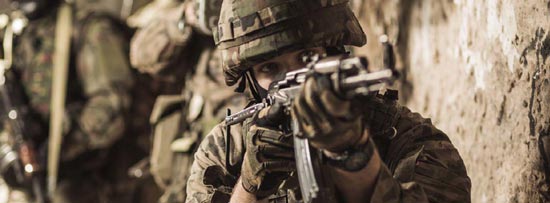 Globally, the military and defence sector has always been keen to use emerging technologies to adapt to evolution and enhance their personnel’s training and combat readiness So, it shouldn’t surprise anyone that the defence sector is actively looking at VR and AR solutions to train their personnel, keep up with the latest military ‘trends’, and gain the first mover advantage in technological aspects of war.
Globally, the military and defence sector has always been keen to use emerging technologies to adapt to evolution and enhance their personnel’s training and combat readiness So, it shouldn’t surprise anyone that the defence sector is actively looking at VR and AR solutions to train their personnel, keep up with the latest military ‘trends’, and gain the first mover advantage in technological aspects of war.
The Army, paramilitary, police forces, Defence research labs, and Defence manufacturers will benefit immensely from the VR and AR solutions .AR can be used to help military officials with equipment maintenance and repair. The VR technology replicates environments during times of crisis such as war, devastation, or in the aftermath of bombing, and use those environments virtually with remote personnel to better plan personnel deployment and crisis management strategies.
What is the relevance of VR and AR In Defence?
Virtual Reality is a technology that simulates real-life experiences and allows people to don their own cyber avatars in a virtual world and interact with it like they would in the real world. The application of VR technology in the military paradigm is to make trainees and officers better at using equipment, navigating a mode of transport, gaining experience of potential combat situations, medical training and more One of the advantage of VR training in the military is that it offers the functionality to immerse users in a virtual yet safe world. This feature is what makes it so relevant in the defence sector, as it offers militaries and defence contractors a way to gain invaluable experience of dealing with high-stress, life threatening environments from the safety of a training room. On the other hand, AR is often used to solve challenges or for training purposes. AR is effective for warfare simulations, military sand tables, battlefield visualisations, and other applications that require a realistic representation of defence activities.
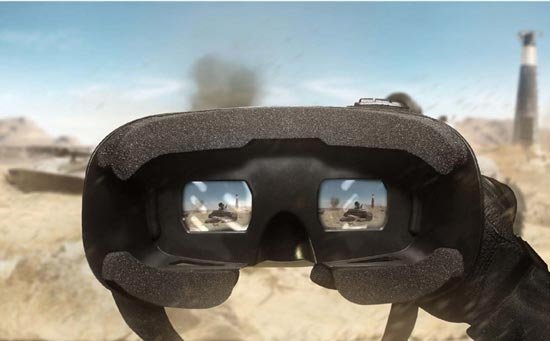 What Training Challenges Does VR/AR Help Tackle for the Defence & Military?
What Training Challenges Does VR/AR Help Tackle for the Defence & Military?
Technologies like Virtual Reality and Augmented Reality resolve multiple pain points that have plagued military training for years, besides negating specific obstacles to training. Here’s how:
Providing ‘First-Hand’ Experience to Trainees: Unfortunately, most training ranges don’t offer opportunities to train in such an environment. This is where VR comes into the picture. VR training solutions can give soldiers the experience of being in battle-like situations under complete safety. VR takes computer-based training to another level by providing personnel a chance to interact with real machines, guns, vehicles and environment to train in a safe, controlled environment with fully immersive, multi-user experiences.
Consistent & Scalable Training: The military sector requires scalable training that can train large numbers of troops or personnel at the same time. Hence, it is crucial to build capacity for practical training at that scale, which is what VR and AR offers. Besides, these platforms ensure consistency of training across thousands of personnel, while also allowing for effective monitoring and evaluation of individual performance.
Training in The Covid-19 Era: Due to the COVID-19 pandemic if not all, most physical training exercises have been put on hold because of the obvious restrictions on movement. VR and AR training platforms, naturally, offer the most logical and practical solution for this pain point.
Cost-effective Training: Training in VR and AR brings down the cost of training drastically because the replicas of weapons or vehicles that are simulated in a virtual training application cost way less than actual inventory. For instance, training flights for fighter pilots are more expensive than a VR flight simulator or actual weapons are more costly to train than a simulated weapon training simulator.
Measurement and Performance Tracking: With Virtual Reality and Augmented Reality training platforms, instructors can receive real-time information on their trainees’ performance in a simulated scenario, allowing them to pass on instant, detailed feedback to each trainee. This helps trainees identify their personal strengths and work on their weaknesses a lot better.
Better engagement: Both AR and VR training modules provide an engaging environment that feels like a serious games. So soldiers and personnel find the training more enjoyable. More often than not, this translates into higher engagement and greater understanding of what they are learning.
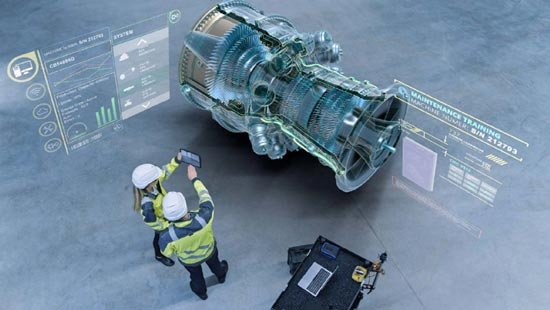 VR and AR Training Solutions That Are Poised to Revolutionize the Defence Sector
VR and AR Training Solutions That Are Poised to Revolutionize the Defence Sector
Governments and Militaries across the globe have already started investing resources to integrate VR and AR in their military training processes. For instance, the US Army Fort Bragg, N.C. is actively developing a realistic training program to allow their officers to prepare for new missions. The government of Australia, too, is developing a similar program for their soldiers. In Norway, trials are scheduled to test how VR can help train army personnel drive tanks. At the same time, VR simulator development companies are also expanding their focus on developing more and more sophisticated products for the defence sector. For instance, at Tecknotrove, the R&D team is developing bespoke training solutions using AR and VR for its clients in the defence and military sector. The company is working on developing simulation prototypes for applications like target training, electronic warfare training and armoured vehicle training. Tecknotrove has developed an MRO training for Aircrafts in a VR environment. This module is used for training the line maintenance and MRO teams for conducting a comprehensive inspection of military aircrafts. Trainees are able to identify faults and take corrective actions, which ultimately enhances flight safety.
Uses & Applications of VR and AR In Military and Defence Training
VR training and AR training both have a plethora of use cases for military training in the Army, Navy and Airforce that enhance the quality of personnel training and increase their chances of carrying out successful missions. Some of these applications are common to all 3 branches of the military while some have a specific use case in a particular branch.
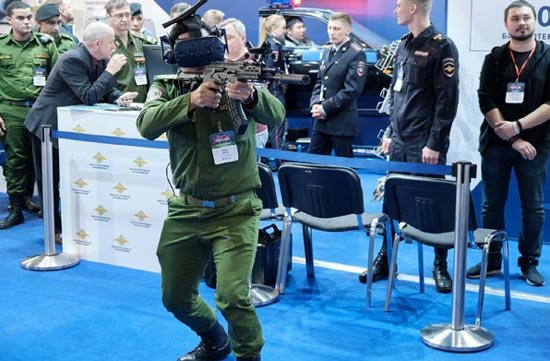 Uses of VR and AR in the Army
Uses of VR and AR in the Army
Firearm Training: From using handheld firearms to launching torpedoes from a submarine or a missile from a fighter jet, Virtual reality and Augmented reality solutions are used to train potential recruits how to use various firearms on battlefields. Firearm training is particularly important as it saves the military a lot of dollars on the cost for real-life equipment training (and particularly firing weapons from jets and submarines).
Electronic Warfare training: The warfare landscape is changing faster than ever before. Wars are now being fought and won, not only on the physical battlefield but also across complex digital landscape spanning information manoeuvre and electronic, cyber and space warfare. Radar and communications operators must be able to rapidly recognize and react to the latest electronic attack methods in order to keep pace with growing threats. The VR training solution for Electronic warfare simulates the latest electronic warfare (EW) threats to train operators to identify and quickly respond to them.
Sniper Training: Sniper operations require the soldiers or marksmen to have highly specialised skills like stalking, observation, map reading, camouflaging and concealment, as well as precision marksmanship under various operational conditions. The VR Training system allows trainees to immerse themselves in a virtual battlefield and shoot thousands of rounds in a completely safe environment, while learning these core skills. Trainees can be immersed in a wide range of scenarios that are normally impractical to simulate due to cost or manpower.
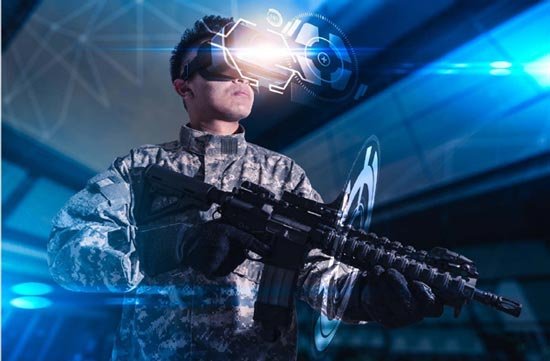 Situational Awareness & Experience: (H4): VR platforms create a framework for trainees to hone their skills in an incredibly realistic and intuitive way, replicating a wide range of real-life scenarios. For instance, trainees can experience what a jungle boat incursion or a guerrilla warfare feels like and how they could react in that particular situation. VR training helps trainees to perfect their thought process and responses to ever changing scenarios that are abound in combat situations.
Situational Awareness & Experience: (H4): VR platforms create a framework for trainees to hone their skills in an incredibly realistic and intuitive way, replicating a wide range of real-life scenarios. For instance, trainees can experience what a jungle boat incursion or a guerrilla warfare feels like and how they could react in that particular situation. VR training helps trainees to perfect their thought process and responses to ever changing scenarios that are abound in combat situations.
Armoured Vehicle Simulator: The simulator system is a replica of an armoured vehicle that provides comprehensive technical training for driver, gunner, commander and crews. The 3D geotypical graphical database ensures immersive training in multiple environment types like desert, jungle, urban areas and multiple training zones like cities, off-road, countryside, test tracks, trial areas, base camps.
Vehicle Repair and Maintenance in the Battlefield: Augmented Reality (AR) can be used to train personnel on Vehicle Repair and Maintenance Instead of printed manuals, AR training environments allow the user to see instructions as an overlay onto the actual object in three dimensions, including specific symbols indicating which part to repair or replace. AR training for vehicle maintenance reduces time and cost of repair for army trucks and weapons.
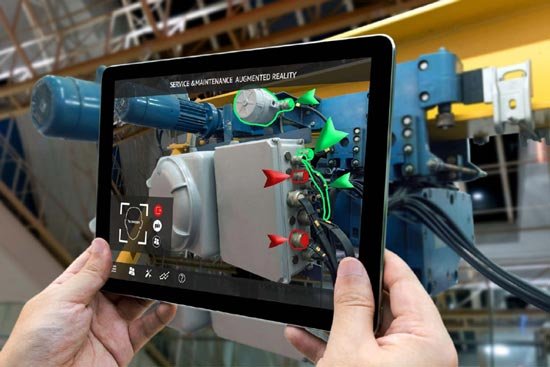 C. Uses of VR and AR in the Air Force
C. Uses of VR and AR in the Air Force
Flight Simulation: VR flight simulators can be used to train pilots in navigating dangerous scenarios in highly realistic simulated environments that are likely to occur in a live aircraft. In fact, some VR simulators are equipped with comprehensive hardware and software sets that recreate a particular aircraft’s cockpit, controls, dynamics, etc. to improve cockpit familiarization. The American Air Force has already incorporated VR into its next gen Pilot Training Next program. They believe that this step will make aviator training more efficient and push trainees through the pipeline much faster.
Maintenance Training: Proper aircraft maintenance is crucial to extend the operable life of the aircraft and minimize the possibility of mechanical failures. VR training modules can be deployed to give maintenance engineers a chance to apply textbook knowledge practically and helps the Air Force roll out more confident and ‘experienced’ maintenance personnel.
Medical Training: It is crucial to provide the best training to medical military officers to reduce on-the-field fatalities. VR is a great way to provide effective and practical training to such personnel and help them adapt quickly to military life. Frantic battlefield scenarios could be replicated to give medical personnel a feel of the environment they are likely to work in and help them learn how to practice their skill in such an environment with greater precision and less anxiety.
 D. Uses of VR In the Navy
D. Uses of VR In the Navy
Virtual Ship Bridge: Naval institutions have introduced VR training to familiarize their personnel with complex equipment. One such training platform is a virtual ship bridge. A ship’s bridge is essentially its mission control and it houses a variety of instruments that are crucial to handle the ship and are a little complex to master. A virtual ship’s bridge allows naval instructors to teach seamanship, navigation, ship handling, etc to the trainees. Hostile enemy attacks can also be simulated and trainee crews can learn how to respond to such emergencies.
Virtual Submarine Simulator: VR environment allows the Navy to conduct Submarine training in a Virtual world rather than in real submarines. Trainee crews are given experience of navigating, manoeuvring, and operating a submarine in VR. Interactive control panels, equipment and machinery allows trainees to practice crucial operational procedures in a simulated environment. Their performance is tracked automatically through the system. VR Training helps trainees gain an understanding of their instruments, which is so crucial to a submarine crew as the efficiency operation solely relies on the operators skill.
Final thoughts
The huge potential of Augmented Reality (AR) and Virtual Reality (VR) is being tapped to create large volume simulation environments for military and paramilitary domains. The VR training and AR training platform is not restricted by the availability of training sites, weather conditions, or the consumption of equipment. This means training can be provided efficiently in a short period of time. As we discovered in this article, VR training and AR help military and defence to combat many training challenges.
Virtual reality takes battle training to the next level by:
- Allowing trainees to practice and improve their skills in safety
- Simulating real life situations with precision to help soldiers develop cognitive skills
- Fostering teamwork, situational awareness and increased stress resistance
- Training personnel to use weapons, navigate aircraft and naval vessels
- Facilitating situations to train medical military personnel
- Resolving logistical roadblocks to training
- Minimizing costs incurred on real world training
Tecknotrove is Asia’s premier Augmented Reality (AR) and Virtual Reality (VR) company with a specialization in developing applications for mining, aviation, automotive and military, defence and nuclear training. Our team of experts will develop bespoke scalable and immersive VR applications that will elevate the efficiency of your personnel training programs. Get in touch with us to discuss your VR integration plans and to deploy revolutionary VR training applications for your personnel.








